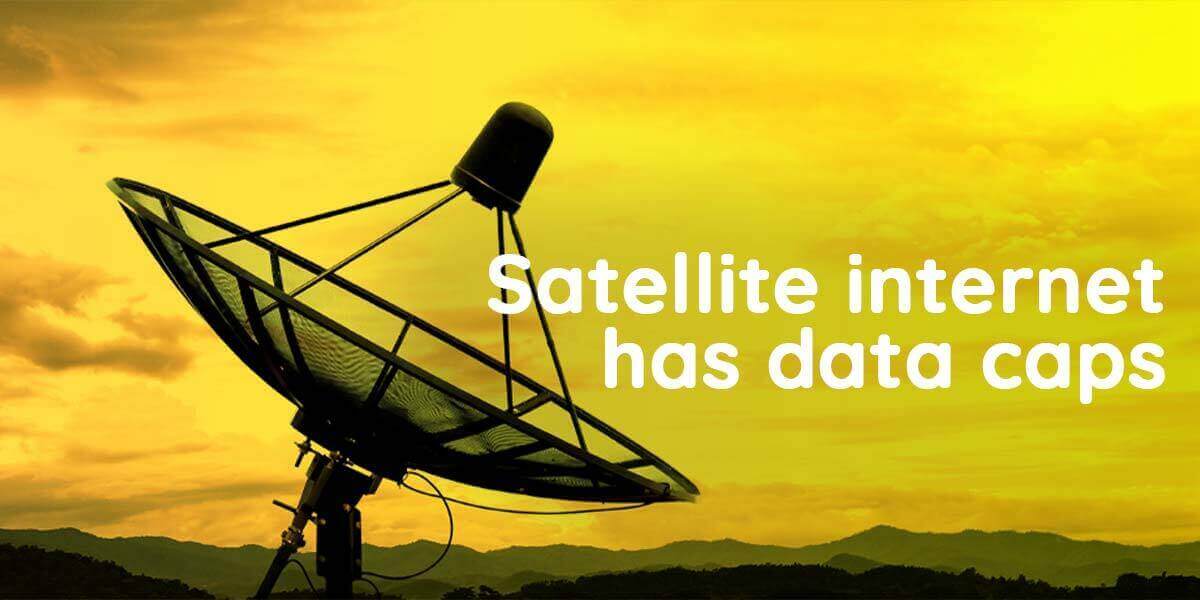Table of Contents
Are you happy with your Internet service?

About the author
Rosslyn Elliott
Watch our provider review videos
Video ReviewsWhich speed do I need?
Tell us what you use Internet for
How many users?
Understanding Average Data Usage Per Month for Home Internet
If you have home internet service, you’ve probably wondered how much data you actually use every month. Digital devices are multiplying, and we use data-hungry services like video streaming in our homes. Most households are consuming more internet data than ever before.
Understanding typical data usage can help you select the right internet plan and avoid costly overage fees. In this beginner’s guide, we’ll explore average home internet data usage, and how you can estimate and manage your monthly usage.
When Does Your Data Usage Matter?
Many internet service providers are now offering truly unlimited data plans, including all fiber providers and some cable providers (HFC).
But some major cable providers still impose data caps (usually around 1 TB). Most satellite internet providers and fixed wireless providers have much lower data caps, with the exception of Viasat and T-Mobile with their unlimited data plans. For other satellite and fixed wireless providers, data allowances can vary from 100 GB to 500 GB depending on the price of the plan you choose. Most often, though, your data allowance from satellite or fixed wireless internet will top out at about 150 GB.
With today’s high streaming demands, a 150 GB data cap can kick in quickly. You may face internet throttling (slowdown) or overage charges. If you have an internet plan with any kind of data caps, you need to know about monthly internet data usage. Soft data caps are still data caps.

Factors That Influence Monthly Internet Data Usage
Several key factors determine how much data your household uses each month:
Number of Devices Connected
The more smartphones, tablets, computers, smart home devices, and other gadgets you have on your home network, the more data you’ll use. Each device consumes data through activities like app updates, operating system updates, and syncing. The average U.S. household now has 10 or more connected devices.
Types of Online Activities
Streaming videos, playing online games, and video chat services use much more data than browsing the web or using social media. Downloading large files through torrents or from cloud storage can also consume huge amounts of monthly data.
Video Streaming and Gaming
Video streaming accounts for over 65% of internet traffic. Just one hour of high-definition (HD) Netflix uses about 3 GB of data. Heavy data requirements for video streaming will sometimes cause the dreaded “buffering” screen. Usually, that happens when you have slower internet or there is network congestion.
Online gaming uses about 100 – 300 MB per hour to play, but as much as 150 GB to download a game. As video quality improves to 4K and 8K standards, each streaming hour will eat up more of your data cap.
Work From Home and Online Education
The pandemic caused a major shift to remote work and online learning. Activities like video conferencing, cloud collaboration, and accessing online class materials can substantially increase home internet data usage.

Average Data Usage Statistics: A Quick Glance
According to 2Q 2023 statistics from OpenVault, the average U.S. household consumes over 533 GB of data per month. Stats show how data usage has changed since video took over the cyber-highway:
- Netflix alone accounts for 15% of global internet traffic.
- 75% of American households have at least one online gamer.
- The average person streams about 19 hours of video weekly.
It’s clear that video now drives most home internet data consumption. As video offerings multiply, time spent streaming and gaming also increases.
Data Used By Common Internet Activities
| Checking text-only email | 1 MB per hour |
| Surfing the web | 50 MB per hour |
| Streaming audio | 115 MB per hour |
| 200 MB per hour | |
| 500 MB per hour | |
| Video calls and conferences | 1.5-2 GB per hour |
| YouTube | 2.7 GB per hour |
| Streaming HD video | 3 GB per hour |
How Internet Providers Measure Data Usage
For home internet plans, providers measure data usage in gigabytes (GB).
1000 megabytes (MB) = 1 gigabytes (GB)
The system adds together your total downstream and upstream traffic.
Most providers let you monitor usage through an online portal or app. Your modem tracks your usage and tallies from the 1st day to end day of each billing cycle. Overage charges are common for exceeding your plan’s data cap.

Internet Providers with Unlimited Data
Many internet providers now offer unlimited high-speed data. All fiber providers offer unlimited data because fiber connections have such high bandwidth. Here are some top-ranked national providers who don’t impose any kind of data caps.
Top fiber providers without data caps
If you’re looking for unlimited data and all the other advantages that come with fiber internet, it’s important to research and compare internet providers. Here are some of the names you should look for.
 |  |  |  |  |
The good news is that if you have fiber internet in your area, you will have unlimited data as a plan option. Enter your zip code for a complete list of providers near you.
Top cable provider and top satellite provider for unlimited data
Spectrum is well-known for offering unlimited data for cable internet plans. In general, though, most cable internet providers have very high data caps that mostly won’t slow you down or trigger any extra fees. Cable providers tend to cap their data at around 1 TB per month, which most households won’t ever exceed. Just watch your data usage if you live with several online gamers or Ultra HD streamers.
Viasat stands out among satellite providers for offering unlimited high-speed data, which will make a huge difference in your satellite internet experience.
|
|  |
Data Caps and Unlimited Plans
If you don’t have unlimited data, your internet plan may have a monthly data cap. Those caps will vary, usually going up to 200 GB for satellite internet, about 300 GB for fixed wireless internet, and 1TB for cable internet. With a cap, overage fees can cost you $10 or more per 50GB increment.
Some satellite companies will offer unlimited “standard” data and then put a data cap on your “high-speed” data. But standard data will give you a slow internet speed that does not allow you full internet activity. When you run out of high-speed data, your internet may slow down so much that you lose the ability to stream video or do other high-data tasks.
Several providers will offer you the option to purchase extra data for the month when you need it. This will increase your internet bill, but at least you will be aware of the choice. With soft data caps like these, you won’t get unexpected charges on your statement.
The Role of Internet Speed
Faster download speeds enable more data consumption. A 100 Mbps connection can use over four times the data of a 25 Mbps connection when streaming video or gaming. When you want to stream on multiple devices at once, you may need a faster internet connection.

Estimating Your Home’s Data Needs
Figuring your ideal data allowance requires estimating your household’s usage. Here are some ways to keep track of your data usage:
Online Tools and Calculators
Many providers offer smart phone-based apps so you can easily check your data usage. These apps will be very valuable if you have a data cap.
Tracking Your Usage with Provider Portals
Monitoring your usage on your provider’s portal for a few months will give you a good baseline. AT&T, Spectrum, and others make your household data usage easy to track. Often, they will even recommend a different plan if your current plan is not supporting your data needs.
Estimate Your Monthly Data Usage
Your Estimated Monthly Data Usage
Your Estimated Monthly Data Usage
Tips to Minimize Excessive Data Usage
If your household exceeds data caps each month, there are steps you can take to reduce usage and avoid overages:
Adjust Streaming Quality
Use standard definition instead of Ultra HD for most streaming when possible. This can cut your data usage so you only use one-quarter of the data you would use in 4K HD. Some providers even offer a data-saving option that allows you to stream in DVD quality (720 pp).
Monitor and Set Alerts
Check usage at least weekly and set alerts for when you reach 75% of your cap. Monitoring and adjusting behavior early in the cycle is key.
The amount of data you use depends on factors like internet speed, devices connected, and online activities. While the average home now uses 500GB+ per month, understanding your usage and patterns is important. With video streaming driving more traffic than ever, monitoring usage and optimizing streaming quality are key to minimizing overages.

FAQs: Average Data Usage Per Month for Home Internet
What is the average internet data usage for streaming video?
Streaming video accounts for over 60% of home internet data usage. One hour of 4K HD video streaming uses about 2-3GB of data on average.
How can I check how much data I have used so far this month?
Most internet providers offer an online portal or smartphone app to monitor your monthly data usage. Checking this regularly lets you adjust usage if needed.
What happens if I go over my data cap?
If you exceed your data cap, your provider may slow down (throttle) your speeds or charge overage fees. Overage charges are often $10-20 per 50GB.
Should I pay for an unlimited data plan?
If you consistently exceed your data cap, an unlimited plan can save you money on overage fees. But if you’re an average user, a capped plan is often sufficient at 1 TB for cable internet.
How can I reduce my data usage?
You can minimize your data usage by streaming at standard definition, monitoring your usage, limiting gaming downloads, and setting data alerts.
How is internet data measured by providers?
ISPs measure your total data usage in gigabytes (GB). Most providers tally all upstream and downstream data from the 1st through the last day of your billing cycle.

About the author

